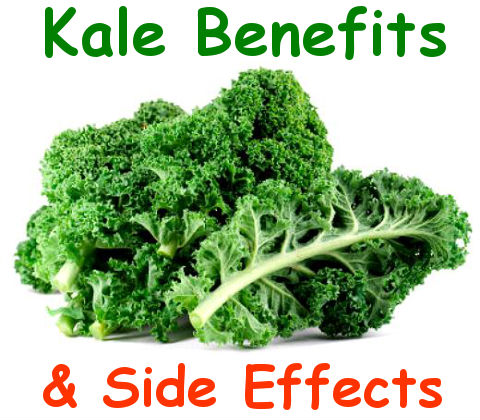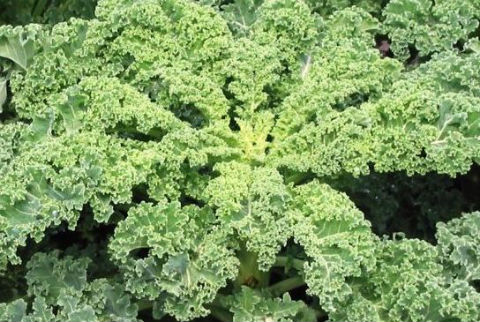What is Kale, Its Health Benefits and Side Effects

Article Contents:
What is Kale
When it comes to greens, kale is one of the healthiest choices. But more than having a very high nutritional value, it is quite delicious too. As a leafy green vegetable, kale is available in three varieties: ornamental, dinosaur, and curly. Kale belongs to the family of veggies where cabbage, broccoli, Brussels sprouts, and collards fall under.
Health Benefits of Kale
Kale can do a lot of wonders in your daily diet. Kale is very rich in vitamins, minerals, and antioxidants. Taking it everyday lets you reap the following health benefits:
1. Easy digestion
Kale is very rich in fiber so your stomach will be happy while you eat it. Kale is low in calories and has zero fat content. It is the perfect food to add to your weight-loss diet plan. Kale also improves metabolism and aid in the hydration process. It can also help fight against constipation and irregular bowel movements.
2. Disease prevention
A cup of kale a day can keep cancer away. Kale contains lots of vitamins that keep both the bones and the blood healthy. It also ensures that all organs are working up to par. It supports the functions of the lungs and makes sure that the bones won’t suffer from osteoporosis or nutrition loss. Vitamin K, which kale has high content of, is known as the nutrient against Alzheimer’s disease. The many antioxidants in kale can also do wonders in preventing the onset of cancer.
3. Promotes healthy circulation
Kale is very high in iron. It helps in the formation of certain enzymes and hemoglobin to efficiently transport blood and oxygen to the different parts of the body. Kale also aids in cellular growth while keeping the kidneys strong.
4. Fights against inflammation
Kale is one of the most effective anti-inflammatory foods as it is very rich in the omega 3 fatty acids. This nutrient helps fight arthritis, joint pains, disorders of the immune system, and asthma.
5. Lowers cholesterol level
The zero fat content of kale can only mean one thing – it can fight off the bad cholesterol present in the blood. Adequate intake of this leafy treat can keep your heart safe from diseases. Kale is known for boosting the functions of the cardiovascular system.
6. Protects the skin and eyes
With the many vitamins packed inside this vegetable, Vitamin A in particular, the eyes and skin are protected. Keep your vision clear while your skin healthy with adequate amounts of kale.
Kale Side Effects

It is hard to list the side effects of a food item that is as green and as leafy as kale. However, too much it would eventually lead you to something harmful. Here are some kale side effects that you have to watch out for when taking this vegetable in increased amounts every day.
1. Hyperkalemia
While it sounds like the sickness associated with an overdose of kale, it’s an entirely different thing. Hyperkalemia is a condition wherein there is too much potassium present in the blood. Its symptoms include fatigue, muscle weakness, chest pain, and diarrhea. People who eat too much kale and other food items that are high in potassium are prone to acquiring this disease.
2. Gastrointestinal problems
Kale contains high contents of fiber that can do more harm than good when consumed in very high amounts. Furthermore, it has been discovered that kale juice contains sorbitol, which is a kind of indigestible sugar. Other digestive tract-related issues associated with consuming too much kale are diarrhea, gas, and stomach cramps.
3. Calorie deficiency
This side effect occurs only on people who use kale as their primary food when dieting. While it is a very nutritious vegetable in its own right, as it doesn’t have enough calories to sustain one’s daily activities. While the weight loss effect will be fast, the body will suffer. Muscle breakdown, problems with blood sugar, vitamin deficiency, and stomach upset are all related to this side effect.
Healthy Kale Recipes
To add just the right amount of kale in your diet, add the two delicious yet simple kale recipes below to your collection. Always remember that kale is very nutritious when taken in correct quantities.
Kale Fritters
Who says you can’t enjoy a serving of crispy fried kale? Here is a recipe that would make you love kale even better.
Ingredients:
- 2 cups kale, finely chopped and firmly packed
- 2 cups fresh corn
- 2 cups leeks, sliced and cleaned
- 1 cup flour
- 1 cup yellow cornmeal, fine
- 1 cup milk
- 1 cup cream
- 2 eggs
- 2 tbsp olive oil
- lemon
- oil
Procedure:
Saute leeks in oil. In a large bowl, mix flour, salt, cornmeal, kale, and corn. In medium bowl, beat eggs, oil, cream, and milk. Add contents of medium bowl to that of the large bowl. Add cooked leeks. Stir. Heat oil for frying. Drop just the right amount of batter into the pan. Add oil to keep them from sticking. Cook each side until golden brown. Sprinkle with salt after flipping. Squeeze some lemon. Serve warm.
Kale Salad
When you hear kale, you must be thinking about those nice and green vegetarian salads. Here’s a simple kale salad recipe to satisfy your cravings.
Ingredients
- 3 cups kale, any variant
- 1/2 cup raspberries or strawberries
- 1/4 cup toasted pine nuts
- 1 tbsp lemon juice
- 1/2 tbsp olive oil
- Salt and Pepper
Procedure
Massage lemon juice, oil, salt, and pepper into kale. Leave it inside the fridge for a few minutes. When it is cold enough, mix in the berries and pine nuts. Enjoy!